To celebrate the world premiere of the LF-Z Electrified, a battery-electric concept vehicle symbolising the Lexus brand’s next chapter, top footwear designer Salehe Bembury, digital artist Ondrej Zunka and Japanese fashion label Hender Scheme have created virtual interiors for the concept, with their colourful imaginings reflecting on Lexus’s dedication to accelerating its electrified future.
Conceived as a platform for collaboration, the LF-Z Electrified Virtual Interior programme introduces a new approach to design, a synergy between art, fashion, lifestyle, and technology that challenges the status quo of the automotive space. The hand-picked creatives exemplify Lexus’s principles of future-inspired design, Japanese heritage and takumi craftsmanship, and an enhanced human-machine connection.

Brian Bolain, General Manager at Lexus International, comments: “LF-Z Electrified embodies the future of the Lexus brand, so it is exciting to see that future represented by such diverse talent across the design space. Each of the collaborators brings a fresh energy that reinterprets the interior of the LF-Z and examines the themes of Lexus’s next chapter.”
Salehe Bembury: blending future aesthetic with organic materials and bright colours
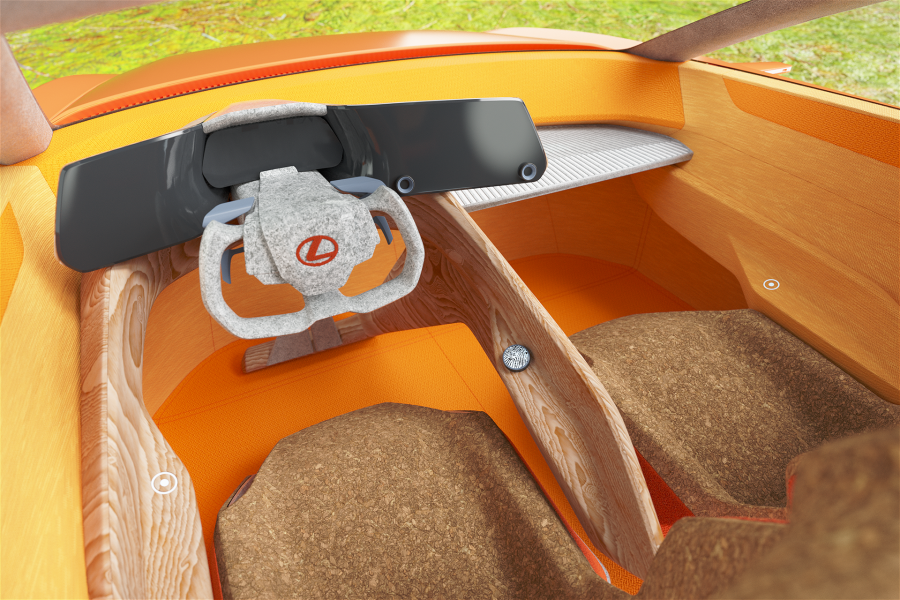
Kicking off the series is US based award-winning footwear designer Salehe Bembury, who is vice president of sneakers and men’s footwear at Versace. His interior concept embraces the future with a nature-inspired design approach. His virtual interior blends a futuristic aesthetic with organic materials alongside his signature use of bright colour.
“I want this car to feel like a seamless juxtaposition of machine and nature, making equal use of the machine function and the benefits of nature to fuel and nurture the passengers on the journey to their destination,” says Bembury.
Bembury uses natural materials rather than futuristic ones, such as cedar, cork and granite, with colours inspired by sandstone landscapes and other natural tones. These natural materials sit alongside textiles and patterns that reference Bembury’s background in trainer design, such as a “hairy” suede used on the seatbacks and a signature fingerprint motif that is often found his work, applied to a personalised control panel.
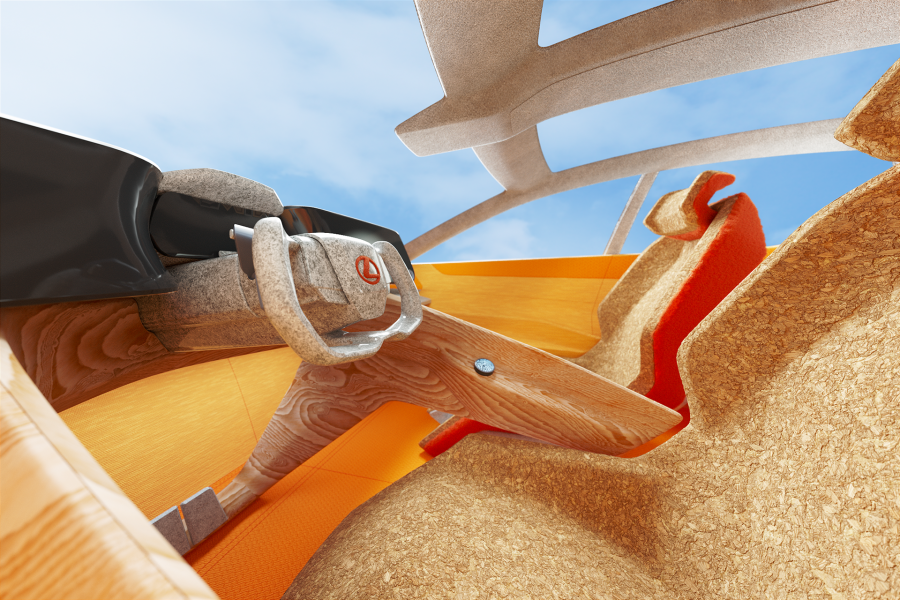
“Just as he has done with footwear, Salahe has pushed the envelope of what design can be in terms of material selection, silhouette and storytelling,” says Bolain. “He is one of the most exciting sneaker designers right now, and he embodies the bold thinking and energy that we see in Lexus’s future.”
Ondrej Zunka: embracing future technologies
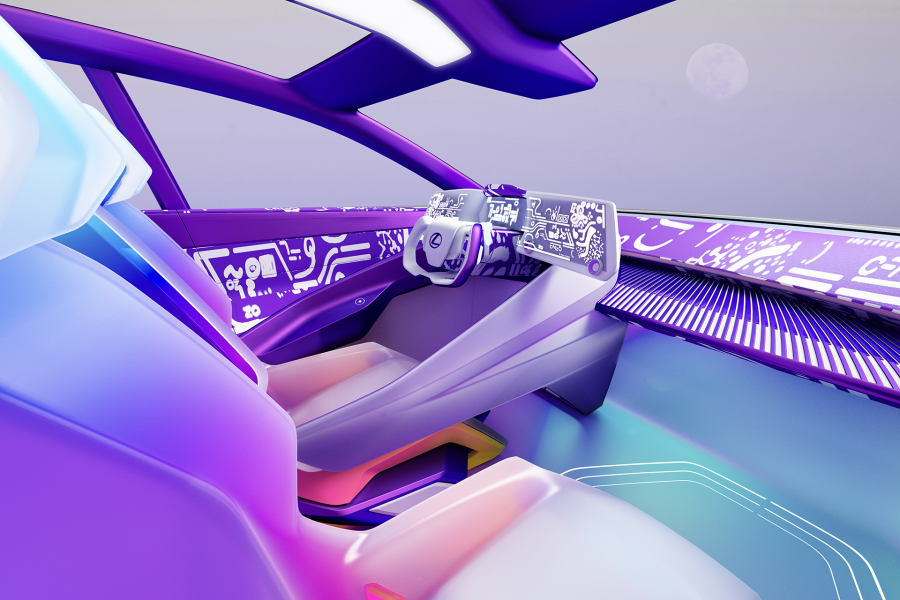
Forgoing traditional notions of car design, while transporting the Lexus LF-Z Electrified further into the future, the second of the virtual interiors were from London-based 3D artist Ondrej Zunka, which features space-age mechanisms, sci-fi materials and multidimensional hues that transcend time and space. “This interior design is purely speculative, so I allowed for free associations and pure imagination and creativity,” says Zunka. “I wanted to make the interior feel as if it wasn’t made by humans, but maybe designed by a sophisticated artificial intelligence. I wanted to go past any known language and design concepts and forget about what is usually used in automotive interior design.”
Looking at Lexus’s commitment to intuitive technology, Zunka digitally rendered a virtual interior that pushes the boundaries of functionality and design. The futuristic tech interior features intelligent lighting along the car’s panels that emit a visceral sensation that subtly regulates mood. Translucent silicone seat cushions with memory foam-like properties and a panoramic ceiling crafted from brushed chrome complete Zunka’s hyper-futuristic vision.
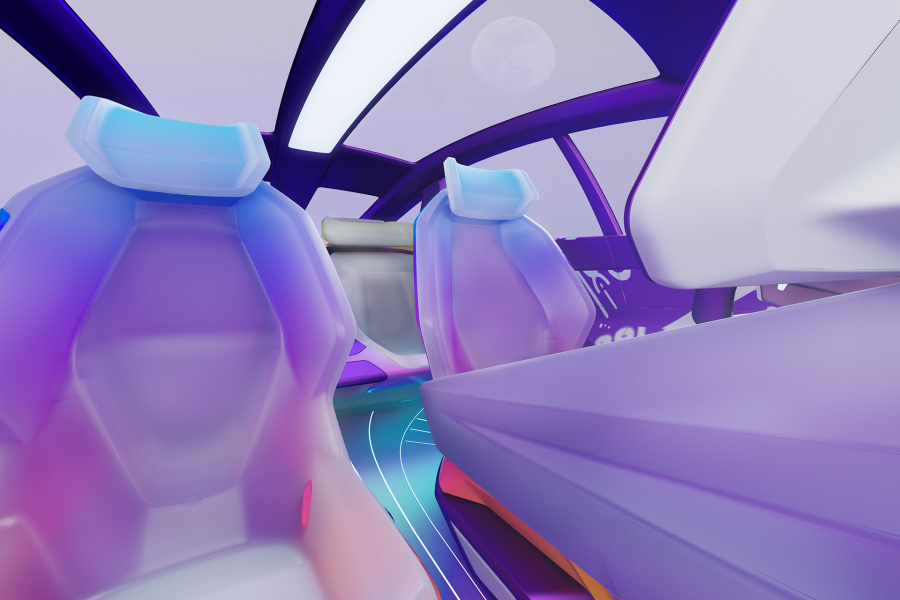
Hender Scheme: leather craftsmanship rooted in Japanese heritage
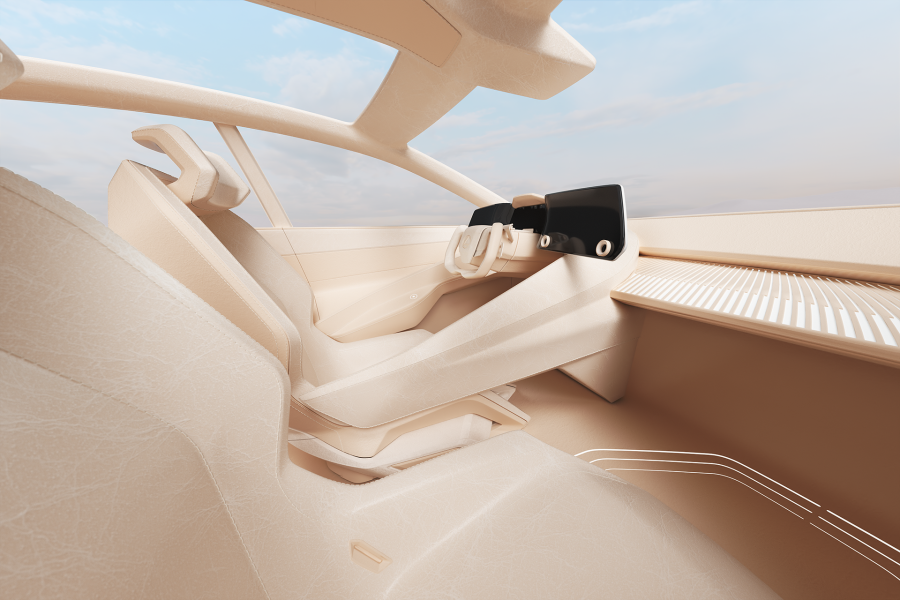
The third of the virtual interiors saw a focus on the natural material characteristics of leather by Tokyo-based fashion label Hender Scheme. Hender Scheme was a natural choice to reflect Lexus’s Japanese heritage and takumi craftsmanship. For its LF-Z Electrified virtual interior, Hender Scheme imagines an entirely leather interior juxtaposed with the concept vehicle’s ground-breaking technology. The untreated, organic material will develop a patina over time, deepening in colour and becoming unique to each vehicle. The concept reflects the passage of time and the driver’s relationship to the vehicle.
In a process that mirrors the 60,000 hours of experience required of a Lexus takumi craftsman, the design is rooted in the work of craftsmen from Asakusa, Tokyo. At the beginning of the process, the leather used for the project requires trained eyes to identify its natural material characteristics such as thickness and elasticity. Moulding methods would then be introduced to shape the leather to the sculptural lines of the roof, doors and instrument panel.
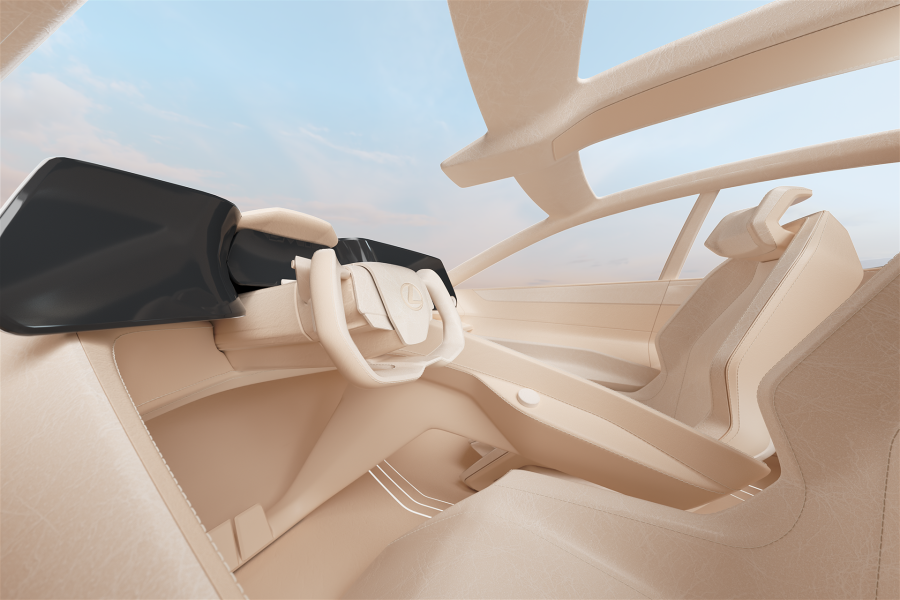
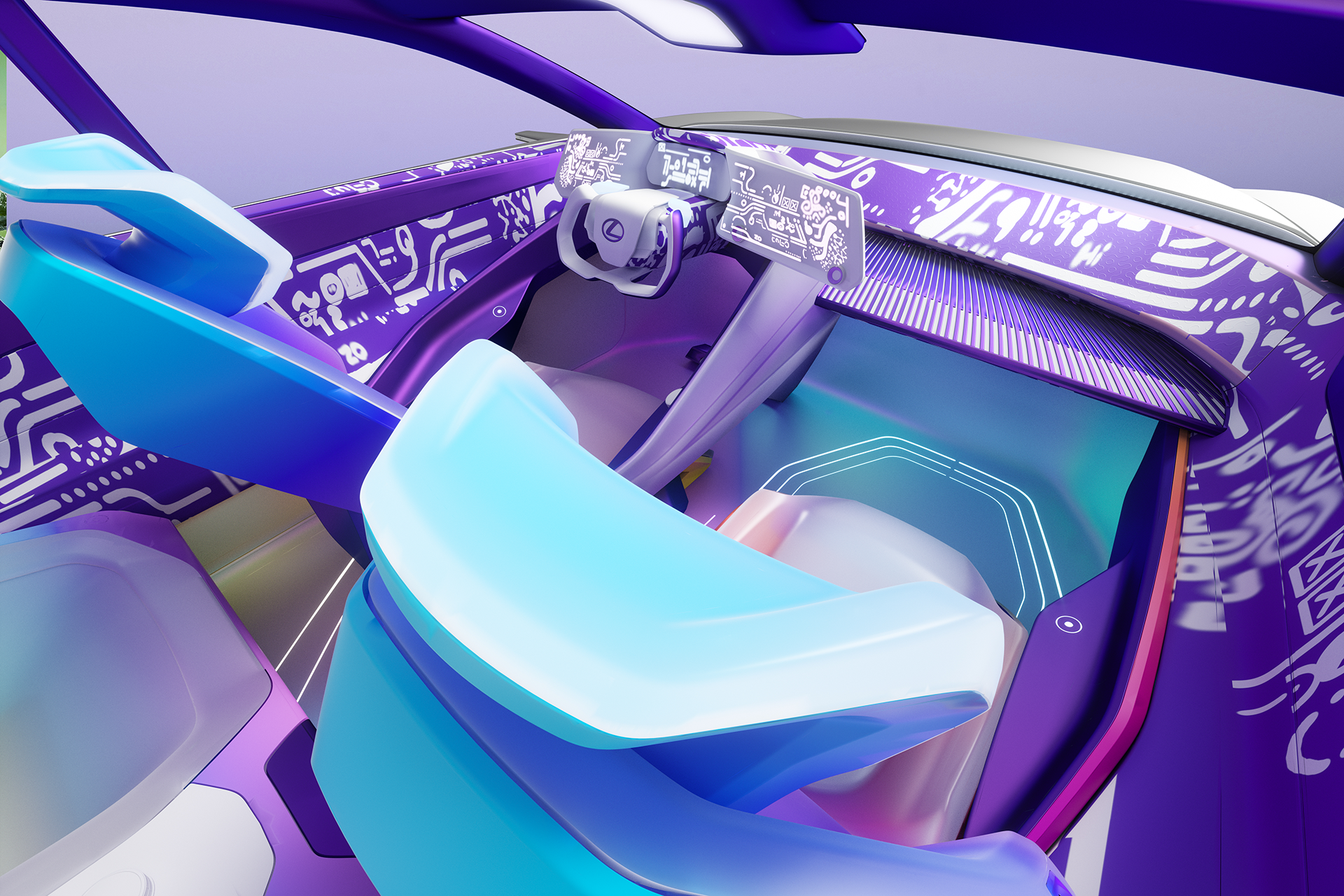


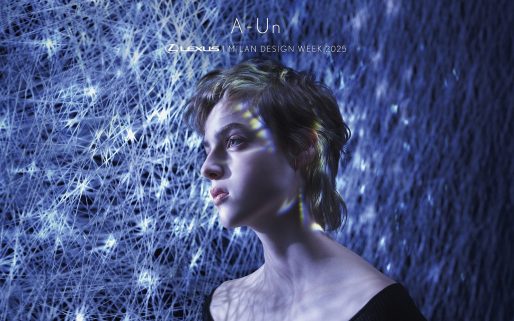
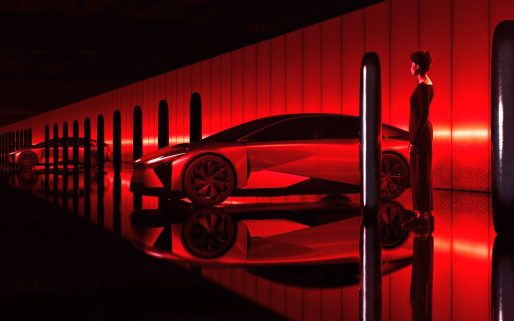
They all look very smart and modern, very futuristic with the smooth plastic and wood lines but they do not look very comfortable or luxurious as I have grown to expect from Lexus. I would not want to travel any great distance in these cars. Do we have to bring our own cushions to sit on?
Hello Geoff,
Thank you for your comment.
The LF-Z’s cockpit is the heart of the vehicle, while the instrument panel and other elements are positioned relatively low down in relation to the occupants. This creates a refreshing sense of openness and the welcoming Omotenashi quality of a hospitality space where every detail has been carefully considered.
You can view the LF-Z Concept itself here: https://mag.lexus.co.uk/lexus-lf-z-electrified-a-new-electric-era-for-lexus/.
Thanks.